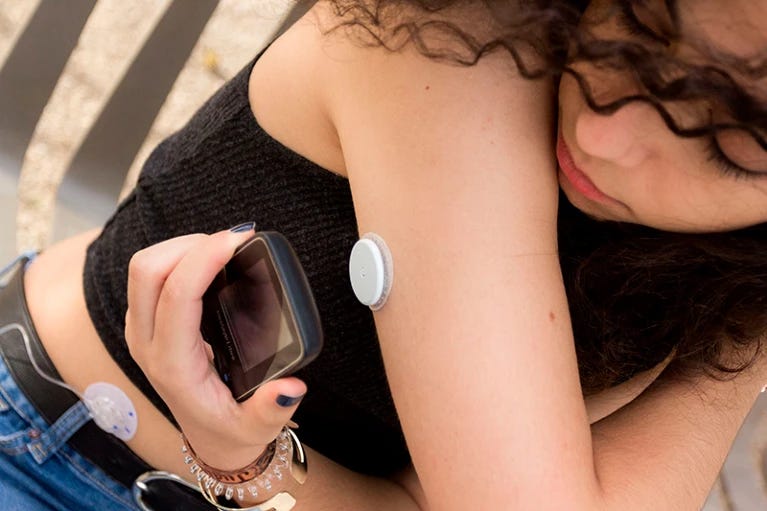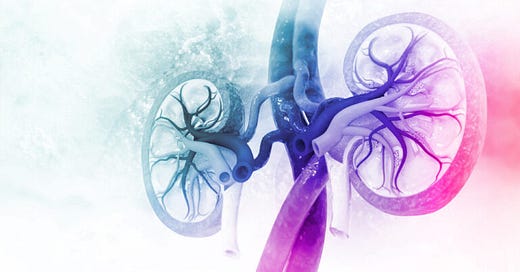Sci-Ed Update 279
Pre-A&P refresher, unique brains, new kidney atlas, MIND diet, life-long placenta effects, DM-1 link to COVID, weekend exercise, more!
Pre-A&P: A Refresher for Student Success in Anatomy & Physiology
In episode 140, we introduce the development of the pre-A&P course and the A&P1 Supplement course. These courses address the challenges faced by A&P students and improve their readiness and comprehension. In this first of two episodes, we focus on the pre-A&P course. It focuses on filling subject knowledge gaps with 10 modules and cumulative tests. Student surveys and studies show its effectiveness in achieving higher grades in the A&P 1 course. [Correction to audio: there is 3/4 letter grade bump to A&P 1 grade]. ]Implementing these nontraditional courses requires collaboration and support from advisors and faculty members. Together, we aim to bridge the gap in subject preparation and learning skills for student success.
0:00:00 | Introduction
0:00:49 | Pre-A&P
0:22:37 | Course Design
0:39:51 | More About Module Tests
0:52:38 | Other Course Features
1:09:51 | Wrapping Up
1:21:10 | Staying Connected
Elyse G.’s brain is fabulous. It’s also missing a big chunk
Elyse and her sister, Martha M., who are not using their full names to maintain their anonymity, look and act perfectly ordinary. But each lacks most of a temporal lobe, and each in a different hemisphere. Elyse is also missing part of her brain stem. The women are two of who knows how many people living their lives without brain structures generally thought to be crucial.
Martha, now age 59, didn’t know her brain was different until she was a teenager. Elyse, who will turn 61 this year, found out in graduate school. Two sisters. Two brains. Two black holes. When MIT cognitive neuroscientist Evelina Fedorenko’s team first learned about the duo, “we were all kind of blown away,” she says.
The left temporal lobe is generally thought to be essential for speech and language, and Fedorenko, who trained as a language researcher, was intrigued. Her lab hadn’t studied people like Elyse before, but “I’m a very adventurous scientist,” she says. So her team brought Elyse to the lab for tests.
Fedorenko didn’t know it at the time, but those first studies would set in motion a whirlwind that would alter the course of her research. Her team’s findings would ignite media attention, prompting even more people to send along their brain scans. What started as a single case study has now snowballed into the Interesting Brains Project.
By the end of this fall, the project will likely have scanned more than 40 people with atypical brains. In many cases, participants are missing entire brain regions, and like Elyse, they didn’t find out until they were adults.
That may be a tribute to the brain’s flexibility — its ability to change and adapt — including its redundancies, Fedorenko says.
Read more→ AandP.info/u7t
MIND Diet Trial Reports Brain Findings
— Study assesses diet to prevent cognitive decline
Changes in cognition and brain MRI outcomes did not differ significantly over 3 years in overweight or obese people with a family history of dementia who followed the MIND diet -- a hybrid of the Mediterranean diet and the DASH (Dietary Approaches to Stop Hypertension) diet -- compared with those who followed a control diet with mild caloric restriction, the phase III MIND trial showed.
Global cognition scores improved in both groups from baseline to year 3, with increases of 0.205 standardized units in the MIND-diet group and 0.170 standardized units in the control group (mean difference o0.035 standardized units with higher scores indicating better cognitive performance, P=0.23).
Read more→ AandP.info/own
The kidney, in all its complexity, is captured in an atlas that could aid disease research
The kidneys are some of the most architecturally complex organs in the human body — intricate in a way that becomes frustrating when, for millions of people each year, they lose function.
It’s only in recent decades that scientists have been able to leverage new techniques, like the ever-growing list of “-omics,” to peer deep inside human cells. This week, in a major milestone aided by those technologies and preceded by years of work by thousands of researchers, a detailed atlas of the human kidney was unveiled to the public via a paper published in Nature. Researchers involved consider it the most comprehensive kidney tissue model to date, and think it could be a vital resource in the study of how the organs go awry, and how to stop it.
Read more→ AandP.info/4wi
Placenta: The overlooked organ with a lifelong impact on your health
AS WE emerged into the world as newborns, each of us lost something important: a body part that had provided us with oxygen and nutrients, removed waste products and kept pathogens at bay. What became of this crucial organ? It was probably thrown in the bin – assuming it wasn’t served up to your parent in the belief that eating it would do them good.
Never mind, you might say. After all, the body part in question – the placenta – is supposed to be a temporary organ. No one wants to go through life attached at the navel to a blob of tissue that looks like a meaty, 20-centimetre-wide mushroom. The moment the umbilical cord is cut, the placenta’s influence on our well-being is severed too.
Or so we used to think, but we were wrong. We are now learning that your placenta may have a surprisingly large hold over your health decades after you lose it. Heart disease, obesity, asthma, several forms of cancer – your long-term risk of all of these conditions might be influenced by the way your placenta grew.
Read more→ AandP.info/5ly
Assignment Makeovers in the AI Age: Essay Edition
Last week, I [Derek Bruff] explored some ways an instructor might want to (or need to) redesign a reading response assignment for the fall, given the many AI text generation tools now available to students. This week, I want to continue that thread with another assignment makeover. Reading response assignments were just the warm up; now we’re tackling the essay assignment.
Read more→ AandP.info/05z
A Giant Study Reveals What Happens if You Cram Exercise Into The Weekend
Exercise is good for your overall health and your heart in particular. Guidelines recommend that we should be doing 150 minutes of moderate-to-vigorous activity a week.
But does it matter when you do this exercise? Should you spread it out in the week or does it lose some of the benefit if you cram it in at the weekend?
A new study analysing data from the UK Biobank has attempted to answer this very question.
Around 90,000 healthy, middle-aged people wore wrist bands (accelerometers) that tracked their activity. It recorded their activity levels for a week with particular attention to moderate-to-vigorous activity (more on that later).
The researchers found that in the six years after the accelerometer assessment, people who did regular moderate-to-vigorous activity had less stroke, heart attack, heart failure and atrial fibrillation (an irregular heart rhythm) compared with sedentary people.
The novel finding of this study was that there was no difference in outcomes in people who did more than half of their activity at the weekend compared with those who spread it out across the week.
Read more→ AandP.info/2l7
As COVID-19 cases rose, so did diabetes — no one knows why

A study of more than 38,000 young people has confirmed what researchers had begun to suspect: the COVID-19 pandemic precipitated a jump in cases of type 1 diabetes in children and teenagers. At first, researchers thought that the rise was caused by the virus itself — but it turns out that is probably not true. Nevertheless, with the overall cause of type 1 diabetes still a mystery, the findings offer new mechanisms for researchers to explore.
The study, published on 30 June in JAMA Network Open1, pooled data from 17 previous studies and found that the incidence of type 1 diabetes in children and teenagers under 19 years old was about 14% higher during 2020, the first year of the pandemic, than in the previous year. The incidence rose higher still in the second year of the pandemic, up 27% from 2019.
“It was a much higher incidence than we expected,” says senior author Rayzel Shulman, a paediatric endocrinologist at the SickKids Research Institute in Toronto, Canada. Before COVID-19, the incidence of type 1 diabetes in children was rising at a steady rate of around 2–4% a year.
“Now, all of a sudden, we see a tenfold increase,” says Clemens Kamrath, a diabetes researcher at Justus Liebig University in Giessen, Germany. “This is definitely a significant jump, to an extent and at a speed not thought possible.”
Read more→ AandP.info/mbj









